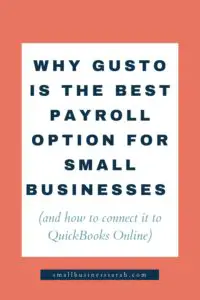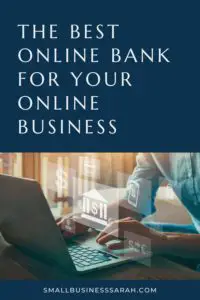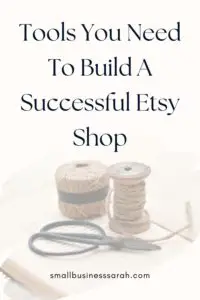Reasons You Should Use Pinterest and Tailwind
Guest post by Shelley Madueme. This page contains affiliate links, which means I will make a commission at no extra cost to you should you click through and make a purchase. Please see the disclosures page for more information.
For the last few years, I’ve been helping Sarah of Small Business Sarah with her Pinterest Marketing. Sarah is an accountant, blogger, YouTuber, and Etsy shop owner who has been running her business online for 8 years.
Pinterest and Tailwind have been key tools for helping her grow, and in this post, I’d like to share three secrets that have made this possible. First, Pinterest is a powerful marketing tool. Second, Tailwind is the perfect platform to help you succeed on Pinterest. Third, the 1-2 Pinterest/Tailwind punch is an excellent way to grow your email list.
Pinterest Is a Search Engine
First, Pinterest is a search engine and not just another social media platform. Maybe this doesn’t sound impressive at first but stay with me. When people visit the Pinterest platform, they're looking for inspiration. And since it’s a search engine, they can use the search bar to find what they’re looking for.
The results that come up in their search are heavily based on keywords and relevant images. So if your Pinterest strategy is rooted in keywords, then your content is primed to be discovered. If you’ve primarily used Pinterest as a consumer to find recipes, party inspiration, or decorating ideas for your home, you might be wondering how to use keywords on Pinterest.
If you’re new to using Pinterest to market your business, your first step is to set up and keyword optimize your Pinterest business account (you can start from scratch or convert your personal account). As you’re doing this, make sure to take advantage of all the places you can use keywords.
Keywords Are Everywhere
Let's take a minute to review places where you should include keywords. The first place is your profile name. While you’re limited by how many characters you can include, you’ll want to work to include a few keywords there. Your profile could be your name or business name, followed by a keyword phrase about your business (tip: editing your profile name on mobile allows you to add more characters than desktop).
Your about section is another opportunity for keywords. Here’s Sarah’s: I help small business owners learn how to do their own bookkeeping and taxes. Get a FREE Small Business Startup Checklist at SmallBusinessSarah.com/newsletter. As you can see, the keywords are related to small business, bookkeeping, and taxes since these are focus areas in her business.
Keywords are also important in your board titles and descriptions. While it’s tempting to give fun names to your boards, it’s more strategic to choose titles that are related to the content of the board.
Instead of calling a board “Cheap Eats,” you could call it Frugal Meals. Then your description might be something like, “Recipes for frugal meals that taste good and help you save money.” Notice that the keywords sound natural. You want to avoid stuffing your board descriptions with keywords.
Since Sarah’s content is about bookkeeping, taxes, and small business tips, she has a board called “Quickbooks Tips.” This board is related to her niche and contains the keyword Quickbooks in the title.
The board description gives Pinterest more information about this board. “QuickBooks tips for small business owners, Etsy shop owners, and service-based entrepreneurs. Learn how to get your business finances organized using Quickbooks.”
Another important place for keywords is your pin description. This is the place to put the most specific information about your content. You write descriptions if you create a pin through the Pinterest platform or you can add the information to the pinnable image via html, alt text on images, or WordPress plugins.
While many bloggers are familiar with Pinterest, it’s a great platform for video and podcasts too. In addition to her blog, Sarah has a YouTube channel with video tutorials for using QuickBooks Online for bookkeeping. She can send people from Pinterest to her YouTube channel. From her channel, visitors can sign up for free content through her email list.
Long Live the Pin!
One of the best aspects of Pinterest is the long life of your content. Pins live for years in the feed (in comparison to a few hours on other platforms). In fact, it’s not unusual to find content from 2014 or 2015!
If you are discouraged by how quickly your Facebook, Instagram, or Twitter posts get buried in the feed, this should be good news. You don’t have to be stuck on a constant content treadmill. Instead, by focusing your efforts on Pinterest, you can increase traffic to your content.
And now that Pinterest recently updated their best practices, we should all be creating new images for content that we have already created. This is an opportunity to add new ways for pinners to find your best content.
Tailwind as a Key to Consistency
Besides keywords, one of the other keys to succeeding on Pinterest is consistency. Pinterest would rather you add content to the platform daily than come in once a week and dump a bunch of pins.
Now I understand that as small business owners, we’re all super busy. That’s why Tailwind is a lifesaver. Tailwind helps you build a consistent presence on Pinterest by scheduling content to post at the times when it’s most likely to be seen by your ideal customer.
And not only does Tailwind allow you to schedule content, it also helps you ensure that you are pinning your content at the proper intervals. Pinterest doesn’t want accounts pinning the same content too frequently. To help its customers avoid being marked as spam accounts, Tailwind has added the all-clear feature, which will flag content that is being added too close together.
Sure, you could pin content on Pinterest here and there. But since the Pinterest algorithm rewards consistency, this laid-back approach won’t get you the results you desire. That’s why Tailwind is a key part of any Pinterest strategy.
Two other benefits of Tailwind are the opportunity to participate in Communities and their Smart Loop feature. When you join a Community, you get to add your content to that group. You also get solid content from other Tailwind users to share on the Pinterest platform. With Smart Loop, you can set your top performing or seasonal pins to be repinned automatically.
Tailwind also hosts regular training sessions on how to get the most out of your account. If you’d like a FREE trial to Tailwind, you can schedule 100 pins for free with this link.
Building Your List
One popular reason that bloggers use Pinterest and Tailwind is to build an email list. It is entirely possible to use social media to grow your business, but you will be impacted every time the algorithm changes. But by building up your email list, you can directly communicate with your followers. In fact, many coaches will tell you building your email list is at the top of the list of reasons you should use Pinterest and Tailwind.
Let’s quickly mention two ways you can use Pinterest to help you build your list. The first way is to have people click through to your blog post and give a call-to-action to sign up for your freebie or send people to your YouTube channel where there is a link to click to sign up for your list. You’ll need to have an email service provider to do this. (My recommended email provider is Convertkit.) But the benefit of this method is that it allows you to build trust with your reader or viewer so they’re more likely to sign up for your list.
The second option is to use a landing page to have people sign up for your list by offering a gift. This could be an ebook or an ecourse or videos that you send out (for example, an exercise challenge or recipe book). You’ll still need an email service provider for this option, but you can build landing pages on your website (some email services providers like Convertkit offer landing pages) or with a dedicated landing page builder and send your Pinterest traffic there. The benefit to a landing page is that signing up for the email list is the only thing on the page. The potential drawback is they don’t know, like, and trust you yet.
Once people sign up for your list, you can set up an automated sequence of emails that introduces them to your business. Then you can share your regular content with your list and let them know when you’re running a promotion.
I know this is a lot of information. But remember that growing your business is the reason you should use Pinterest and Tailwind. That means determining what metrics matter most for you and focusing on those. If you’d like to receive a FREE Small Business Startup Checklist, you can get that HERE.About
Shelley Madueme
Shelley Madueme is a copywriter and digital marketing strategist. She helps coaches, course creators, and service providers create messaging that attracts their ideal customer, fills their programs, and grows their bottom line. If you’re launching a new website, program, or offer, check out the free copywriting resources on her website.




